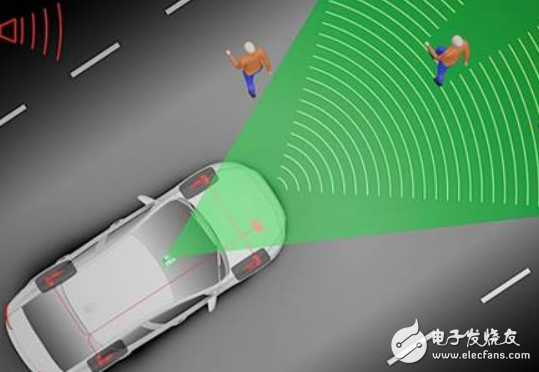Compared with traditional radar, laser radar has become an advanced active remote sensing tool with precise time resolution, precise spatial resolution and ultra-long detection distance. Its high-precision measurement function enables it to achieve accurate distance measurement and speed measurement. , tracking, detection, etc., have been widely used in civil and military fields, and have broad prospects for development. What is a laser radar? The laser radar uses a laser beam as an information carrier to carry information by phase, amplitude, frequency, etc., and raises the frequency of the radiation source to the optical frequency band to detect extremely small targets. It is the cutting-edge technology of modern optics, involving many subject areas of physics, combining the advantages of traditional radar and modern laser, and is an advanced technology product of active remote sensing. What impact can laser radar have on human life? Lidar combines laser optics and atmospheric optics to coordinate and integrate cutting-edge technologies such as traditional radar, opto-mechatronics and computerization. It is involved in all major fields of physics and is one of the cutting-edge application technologies of physics. At present, the family of laser radars is huge, and there are many classification standards. It can be classified according to standards such as lasers, functional uses, and detection technologies. Due to its high resolution and sensitivity, and strong anti-observation background, it can realize all-day observation. It can be widely used in environmental monitoring, topographic mapping, high-altitude detection, military applications, civil vehicles and other fields. Lidar has strong directionality, high coherence and strong monochromaticity, and it has developed rapidly in the meteorological field. It can be used to detect aerosols, airborne clouds, ocean and stratospheric wind fields, greenhouse gases, temperature and humidity changes, etc., providing accurate real-time data, providing assurance for air flight, and providing for meteorological research, weather forecasting, and atmospheric modelling. Based on data, it provides guidance for global climate change, carbon cycle research and prediction. For example, to detect respirable particulate matter and cloud-aerosol concentration, backscattered laser radar can be used; to measure information on wind field, wind shear and wind speed in the ocean wind field, stratospheric wind field, and Doppler lidar can be used to observe greenhouse gas and pollution. For the concentration and distribution of gases, a differential absorption radar can be used. In terms of ocean exploration, Lidar's airborne, shipborne platforms and underwater platforms can detect wave movements, oil pollution, oil and gas reserves, etc. in shallow seas and in the sea. General laser depth detectors are commonly used to detect shallow seas, difficult to navigate waters, and complex islands and reefs. For example, the no-load marine laser radar can achieve fast scanning, and the detailed shallow sea topography is obtained after feedback analysis. Compared with sonar measurement technology, the measurement efficiency and measurement quality are far improved. Using the penetration of laser radar pulse waves, the forest field can be explored. By analyzing the echo waveform data of the pulse wave, the three-dimensional structure of the forest topography can be obtained, and important parameters such as forest height and canopy structure can be estimated, the number of forest organisms can be estimated, and underground tombs, buildings, etc. can be found, for other forestry research. Archaeological research provides basic data. Lidar has strong directionality, high angular resolution and short working wave. It can accurately measure distance, velocity and angle, and there is no atmospheric attenuation and scattering in space. Lidar is light in weight, small in weight and low in energy consumption. The space field has also been developed. In the past ten years, laser radar has been widely used in space fields such as astral laser measuring instruments, spacecraft docking and landing navigation, aircraft imaging, and aircraft. In the military field, laser radar can be used for battlefield surveillance, intelligence gathering, obstacle avoidance, enemy detection, weapon navigation, precision strikes, etc. For example, the deep-water detection technology of lidar is used to scan and reconcile underwater targets such as submarines and mines. Lidar in the military field, whether it is microscopic individual positioning, or macroscopic battlefield monitoring, has its use. In automotive applications, laser radar is not only highly accurate, but also has a wide visible range. It is not afraid of foggy rain and rain, and naturally becomes the reliable choice for driverless cars. The observation tools used in general cars are cameras or ordinary radars (radio radars). The camera has high precision and long visible range, but it is afraid of fog and rain. Ordinary radar is not afraid of fog and rain, but has low precision and short visible range. Lidar is combining the advantages of both, allowing 360° to scan the surrounding environment during driving. LED Laser lamp,Full color led laser lamp Kindwin Technology (H.K.) Limited , https://www.szktlled.com